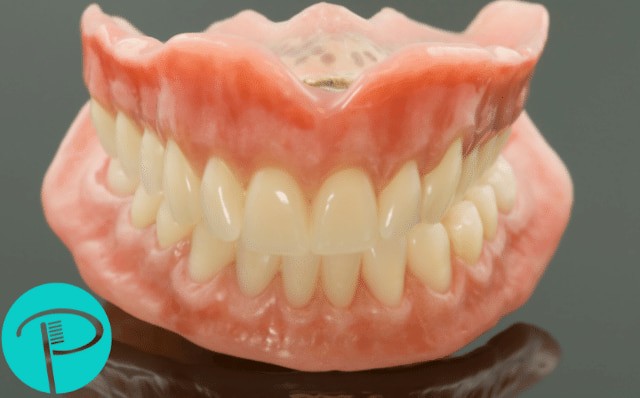Healthy gums are typically a vibrant pink, so noticing a change to white can be alarming. White gums, or gum pallor, can be a sign of various underlying issues, ranging from temporary reactions to more serious health conditions. This article will explore the potential causes of white gums, when it’s a cause for concern, and what treatment options are available. It’s crucial to remember that if you observe white patches on your gums, seeking professional medical or dental advice promptly is essential for accurate diagnosis and appropriate care.
What Do White Gums Indicate?
White gums refer to a discoloration of the gum tissue surrounding the base of your teeth. This can manifest in several ways, including white patches, a general paleness across the gums, swelling, and in more severe cases, even bleeding or loose teeth.
Essentially, white gums are often a symptom indicating an underlying health issue. This could be as simple as a temporary reaction to a dental procedure or signal a more significant problem like an infection or disease. If you’ve recently had a dental treatment such as teeth whitening or a tooth extraction, white gums might be a temporary and expected side effect.
When Should You Be Concerned About White Gums?
While sometimes white gums are temporary and benign, in many instances, they can be a symptom of a condition requiring medical attention. Determining the seriousness of white gums on your own can be difficult, which is why professional evaluation is critical. It’s especially important to consult your dentist if you experience any of the following alongside white gums:
- Loose teeth
- Ulcers or sores in the mouth
- Pain or discomfort
- Swelling
- Bleeding gums
These accompanying symptoms can help indicate a more serious underlying issue that needs to be addressed.
Common Causes of White Gums
Several factors can contribute to your gums turning white. These range from temporary side effects of dental procedures to more chronic and serious medical conditions. Here’s a breakdown of potential causes to be aware of:
- Anemia
- Canker Sores
- Gingivitis
- Leukoplakia
- Oral Cancer
- Oral Lichen Planus
- Oral Thrush
- Teeth Whitening
- Tooth Extraction
Let’s delve deeper into each of these potential causes.
1. Anemia
Anemia occurs when your body doesn’t produce enough red blood cells. Red blood cells are vital because they carry oxygen throughout your body, including your gums and oral tissues. When there’s a deficiency in red blood cells, it can lead to reduced oxygen supply, causing your gums to appear pale or white.
Anemia can be caused by various factors, including dietary deficiencies (like iron or vitamin B-12), chronic diseases (such as Crohn’s disease), or other underlying medical conditions. Often, fatigue is the first noticeable symptom of anemia. Other common symptoms include:
- Shortness of breath
- Cold hands and feet
- Dizziness
- Headaches
- Irregular heartbeat or chest pain
Treatment for Anemia-Related White Gums
Treatment for anemia depends entirely on the underlying cause. If it’s due to dietary deficiencies, iron supplements, vitamin B-12 injections, and dietary changes can be effective.
For more severe causes of anemia, such as bone marrow diseases or sickle cell anemia, more extensive treatments might be necessary. These could include medications, blood transfusions, bone marrow transplants, oxygen therapy, or even chemotherapy in specific cases.
2. Canker Sores
Canker sores, also known as mouth ulcers, are small, painful sores that can develop inside your mouth. They typically have a white or yellowish center and a red border. They commonly appear on the soft tissues inside the cheeks, under the tongue, or at the base of the gums, which can make the gums appear white in the affected area. While the exact cause isn’t fully understood, factors like bacterial infections, minor mouth injuries, food sensitivities, and stress are believed to trigger outbreaks. Importantly, canker sores are not contagious.
Diagnosis of canker sores is usually straightforward through a visual examination by a dentist or doctor. While most resolve on their own, persistent or severe sores might require further investigation to rule out other underlying health problems.
Treatment for Canker Sores
Minor canker sores usually heal naturally within one to two weeks without specific treatment. However, more painful or numerous sores may benefit from medical interventions to alleviate discomfort and promote healing:
- Steroid mouth rinse: A rinse containing dexamethasone can help reduce pain and inflammation.
- Topical over-the-counter products: Benzocaine, hydrogen peroxide, or fluocinonide topical treatments can speed up the healing process.
- Oral steroids or ulcer medications: Prescribed if topical treatments are insufficient.
- Chemical cauterization: Used in some cases to destroy sore tissue.
- Nutritional supplements: May be recommended to address potential deficiencies.
3. Gingivitis
Gingivitis is an early form of gum disease, a bacterial infection of the gums often caused by inadequate oral hygiene and plaque buildup. This infection can manifest as white patches on the gums, gum recession, or even gum overgrowth around the teeth.
Other telltale signs of gingivitis include:
- Inflamed or red gums
- Loose teeth
- Bleeding gums, especially during brushing or flossing
Untreated gingivitis can progress to periodontitis, a more severe form of gum disease that can lead to tooth decay and eventual tooth loss. Addressing gingivitis promptly is crucial to prevent these complications.
Treatment for Gingivitis
The cornerstone of gingivitis treatment is improving and maintaining excellent oral hygiene. This involves daily brushing and flossing to remove plaque and prevent bacterial buildup.
Most cases of gingivitis can be treated non-invasively with professional dental cleaning to remove plaque and tartar and sometimes antibiotic medication. However, severe gingivitis that has led to gum or bone tissue loss may require surgical intervention.
Surgical treatments can include deep cleaning to remove plaque and tartar from below the gum line, gum flap surgery to access and clean tooth roots, gum grafting to cover exposed roots, and bone grafting to regenerate lost bone tissue.
4. Leukoplakia
Leukoplakia is a condition characterized by thick, white or grayish patches that develop inside the mouth. While often linked to tobacco use, other irritants can also cause these patches. Minor cases may resolve on their own, but some can be precancerous or associated with oral cancer, especially if red spots are present within the white patches.
Leukoplakia patches typically develop gradually over weeks and can appear on the gums, inner cheeks, tongue, or lips. They are usually painless but can cause the gums to turn white when they occur on the gum tissue.
Besides smoking and tobacco use, other causes of leukoplakia include:
- Ill-fitting dentures
- Mouth injuries (e.g., biting the cheek)
- Excessive alcohol consumption
- Rough teeth edges
- Chronic irritation
Treatment for Leukoplakia
Many leukoplakia patches will improve spontaneously without specific treatment, especially if the irritant is removed (e.g., quitting smoking). In persistent cases, antiviral medications or topical retinoid ointments may be prescribed.
Long-lasting leukoplakia patches require close monitoring as they can sometimes indicate oral cancer. In such cases, removal of the patch is necessary, often through laser therapy, cryotherapy (freezing), or surgical excision with a scalpel to prevent cancer progression.
5. Oral Cancer
While less common, white gums can be a symptom of oral cancer, also known as oral cavity cancer. This serious disease can affect any part of the mouth, including the gums, tongue, cheeks, and palate. Oral cancer can spread rapidly if not detected and treated early.
Oral cancer patches may appear white, red, or flesh-colored and often have a bumpy texture. Other symptoms that may accompany oral cancer include:
- Mouth sores that don’t heal
- Loose teeth
- Difficulty or pain swallowing
- Bleeding in the mouth
- Lump or growth in the mouth
- Neck lump
- Persistent earache
- Numbness in the face or neck
- Jaw or tongue stiffness or pain
- Unexplained weight loss
If you experience any of these symptoms, prompt medical attention is crucial. Risk factors for oral cancer include smoking, excessive alcohol consumption, poor diet, previous cancer diagnoses, and HPV infection.
Treatment for Oral Cancer
Treatment for oral cancer depends on the stage and location of the cancer. Early-stage oral cancer may be treated with surgery to remove tumors, followed by radiation therapy or targeted therapy. More advanced cases often require chemotherapy in addition to surgery and radiation.
6. Oral Lichen Planus
Oral lichen planus is a chronic autoimmune condition where the immune system mistakenly attacks cells in the mouth. This can cause white, lacy patches to develop on the gums, tongue, and other oral tissues. Oral lichen planus can also cause redness, swelling, and open sores in the mouth. It is not contagious.
Individuals with oral lichen planus have a slightly increased risk of developing oral cancer, making regular dental and medical check-ups essential for managing symptoms and monitoring for any changes.
Treatment for Oral Lichen Planus
As an autoimmune condition, there is no cure for oral lichen planus. Treatment focuses on managing symptoms and reducing discomfort. Options include:
- Topical corticosteroids: Gels or creams to numb inflammation and pain.
- Systemic corticosteroids: Medications to suppress the immune response in severe cases.
- Pain management: Pain relievers to alleviate discomfort.
7. Oral Thrush
Oral thrush is a yeast infection caused by an overgrowth of the Candida fungus in the mouth. It’s characterized by raised, creamy white or yellowish sores that can appear on the inner cheeks, tongue, and gums. In severe cases, oral thrush can spread and cause the gums to appear entirely white due to the extensive coverage of the patches.
Other symptoms of oral thrush include:
- Cottony sensation in the mouth
- Burning or soreness
- Redness
- Difficulty eating or swallowing
- Cracked corners of the mouth
- Loss of taste
Infants, the elderly, and individuals with diabetes or weakened immune systems are more susceptible to oral thrush.
Treatment for Oral Thrush
Most cases of oral thrush are easily treated with antifungal medications. These are typically prescribed as mouthwashes or lozenges. If the infection persists, it may indicate an underlying issue, such as poorly fitting dentures or steroid use, that needs to be addressed.
8. Teeth Whitening
Professional teeth whitening treatments use strong chemicals to bleach the teeth. These chemicals can temporarily irritate the gums, causing them to turn white. This is a temporary side effect and not usually a cause for concern.
Treatment for Teeth Whitening-Related White Gums
No treatment is needed for white gums caused by teeth whitening. The discoloration is temporary and should resolve on its own within a few hours to a few days.
9. Tooth Extraction
Following a tooth extraction, it’s common for the gums around the extraction site to appear white. This is a normal reaction to the trauma of the procedure and the healing process.
Treatment for Tooth Extraction-Related White Gums
Like teeth whitening, white gums after a tooth extraction are temporary and don’t require specific treatment. The normal pink color of healthy gums should return within a few days as the area heals.
 Dental Dentures for cleaning at Putney Dental Care
Dental Dentures for cleaning at Putney Dental Care
Can White Gums Return to Pink?
In many cases, yes, white gums can return to their normal pink color. For temporary causes like teeth whitening or tooth extraction, the color typically resolves within hours or days. For conditions like gum disease or autoimmune disorders, the return to pink gums depends on successful treatment and management of the underlying condition.
With appropriate treatment plans, improved oral hygiene, and time, most conditions causing white gums can be managed, and gum color can improve. Chronic conditions like oral lichen planus may require ongoing management to control symptoms and maintain gum health.
How Long Do White Gums Last?
The duration of white gums varies significantly depending on the cause. As mentioned, temporary causes like teeth whitening or tooth extraction resolve quickly. Conditions like canker sores or leukoplakia may take longer to improve, often weeks, even with treatment. Chronic conditions may have fluctuating symptoms, and white gums may persist until the condition is effectively managed.
When discussing treatment options with your dentist, it’s always a good idea to ask about the expected duration of white gums for your specific situation.
Preventing White Gums
While some causes of white gums, like autoimmune conditions or genetic predispositions, may not be preventable, many causes related to gum disease and bacterial buildup can be avoided by maintaining good oral hygiene.
Here are key preventative measures:
- Brush your teeth twice daily: Use a soft-bristled toothbrush and gentle circular motions to avoid gum irritation.
- Floss daily: Clean between your teeth once a day to remove plaque and food particles.
- Use an alcohol-free mouthwash: Rinse daily to further reduce bacteria.
- Eat a balanced diet: Limit sugary and processed foods and drinks.
- Quit smoking and tobacco use: These are major irritants and risk factors for oral health problems.
- Clean your tongue: Use a tongue scraper to remove bacteria and debris from the tongue surface.
- Avoid SLS-containing oral products if sensitive: Sodium lauryl sulfate (SLS) in some toothpaste and mouthwashes can irritate sensitive mouths.
- Manage chronic health conditions: Follow prescribed treatment plans for conditions like diabetes or autoimmune disorders.
- Saltwater rinse: For irritated gums, rinse with warm salt water to soothe inflammation.
- Over-the-counter pain relievers: Use as needed for pain management.
Crucially, schedule regular dental check-ups and cleanings at least twice a year. Professional cleanings remove plaque and tartar buildup that home care might miss, allowing for early detection of gum discoloration or other oral health issues. Experienced dental professionals, like those at Putney Dental, can identify early signs of gum problems and provide timely intervention.
If you’re concerned about the color of your gums or are due for a routine teeth cleaning, don’t hesitate to book an appointment online or call us at (02) 9808 2588 today.

